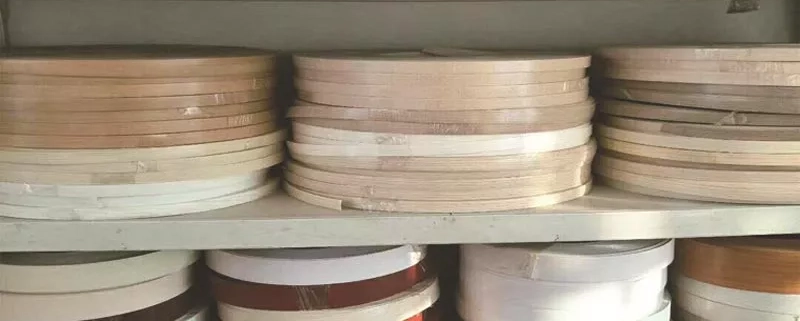PVC Edge Banding – A Home Improvement Project For the DIY’er!
If you have decided to build your own house and you want to make sure it’s the most perfect possible, one of the first things you’ll need to do is put up PVC Edge Banding. It can make a huge difference in the appearance and feel of your room, and you’ll be surprised at how easy it is!
Contact adhesives
Contact adhesives for PVC edge banding tape come in a variety of choices. However, it is important to apply them correctly to ensure a quality bond. Choosing the wrong type of glue can lead to a failed project. Therefore, you must know what options are available and how to choose the best one for your needs.
The most common type of hot-melt edge banding glue is EVA, or ethylene vinyl acetate. It is easy to apply, affordable and forms a strong bond. It is also very resistant to moisture and cleaning agents.
Another option is polyurethane (PUR). It is very durable and forms a strong bond quickly. You can tint it to match the color of your material. This is especially useful if you are installing a laminated board.
Polyamide hot-melt glues are tough and hold up well in laundry cycles. They are used extensively in the textile industry. These glues can be brittle at low temperatures. They are also fire-retardant.
The next most commonly used option for edge banding is a polyurethane reactive adhesive. While it takes longer to cure, it offers a strong bond. There are a few drawbacks to this type of glue, though. Some types require 24 hours to complete a full cure.
Polyvinyl chloride (PVC) is a plastic polymer that is the third most widely manufactured synthetic polymer in the world. It is used in applications such as furniture, doors, and pipes. It is available in rigid or flexible forms.
Edgebanding is a process that creates trim around unfinished edges of wood, metal, or other material. It creates a durable finish that gives a nice, high-end look. Various materials are used for edgebanding, including melamine, a laminated MDF core.
When applying contact adhesives for PVC edge banding, make sure that you apply them at the right temperature. If you do not, the glue may not adhere to the PVC. In addition, it is a good idea to cut away excess edge banding.
Using the wrong glue can lead to a failed edgebanding project. Always use gloves, and avoid exposing yourself to excessive heat and oxygen.
Trim
PVC edge banding may not be for everyone but it does come with some perks. For starters, it is very easy to install. There are even products out there that let you choose from a range of pre-glued materials to get the job done quickly and cheaply. You’ll also be pleased to know that it’s chlorine-free and environmentally friendly. Unlike other materials, it will not crack or break, which makes it ideal for high-traffic areas like kitchens and bathrooms. Moreover, it’s very easy to clean, and the smooth finish will make your new furniture look just as good as it did the day you bought it.
In addition to the standard red oak, you can also choose from an assortment of exotic woods. These include Asian and African species. The aforementioned material has a relatively low cost, but you’ll probably want to spend a bit more for something more exotic.
To do the job properly, you’ll need a suitable machine. Some brands offer a combination tool and gluing system, while others require a special machine to do the job. One of the best is the STA-Titan. It will cost you about $350, but you can expect to get the job done in a fraction of the time.
Another option is to get professional help. This can be a great option if you have a big project to get done or if you’re just in a hurry. A professional installer will make sure your PVC edge banding trip is installed correctly, and it will be a hassle free process. Plus, the best part about working with professionals is that you won’t have to deal with all the dust and grime of DIY!
One of the most impressive tidbits you’ll learn is that edge banding can be used to cover three quarters of an inch of wood. To make things easier, you can buy it in a variety of sizes and colors. It’s also available in wood-backed variants. Using edge banding is a fun and easy way to update your kitchen or bathroom, and it will pay off for years to come.
DIY vs professional
There is a reason that PVC edge band is considered an elite status among the cabinet and furniture fraternity. Aside from the fact that it is highly durable and slick to boot, it has a plethora of aforementioned advantages. From the aforementioned ease of installation to the aforementioned cost of ownership, PVC edge banding arguably represents a winning home improvement strategy. With the right tools and a healthy dose of awe, you could be on your way to a more refined home in no time at all. That’s a tall order, but it’s one you can certainly address if you know where to look. The right tools are the key to a squeaky clean home, and you’re sure to be rewarded with a long list of happy occupants. So what are you waiting for? Put a notch on your belt and get started on your next home improvement project today. Or, better yet, hire a pro to take care of it for you. After all, no one likes to do their own work! Thankfully, there is an excellent selection of quality, low-cost vetted professionals in your hood.
Make sure each side of a piece of wood matches
If you are considering adding PVC edge band tape to your home, there are several different ways to go about it. It’s easy to apply. There are no complicated tools to learn, and it’s not too hard to remove. In addition, it provides a superior look and is scratch resistant. Whether you’re working on a wood countertop, a door, or a piece of furniture, you can make a huge difference with edge banding.
Edge banding is a material used to cover the exposed sides of a piece of plywood, particleboard, or other wood. This helps provide a durable finish and allows it to be painted. Edge banding can also be used to hide unfinished edges. For example, cabinet shelves can have rough edges, or a piece of plywood might have been moved and the edge is not in a good state. Once you add edge banding, the plywood will look like a solid piece of wood.
It is a cheap way to improve the look of your wood project. Although edge banding can be applied to any surface, it’s best to trim it off the edge. You can use a utility knife or a router to do this. Be careful when you are trimming. Make sure you keep it level and don’t cut it too deep.
PVC edge banding can be applied manually with just a few simple steps. You can even apply it to a piece of melamine or laminated board. Just be careful not to apply it to a semi-gloss finish.
Depending on how you apply the edge banding, you can get a beautiful, long-lasting result. If you’re looking for a quick, inexpensive home improvement project, consider using PVC edge banding. It’s easy to apply, it’s scratch-resistant, and it comes with hot-melt adhesive. Plus, it’s easy to trim and trim off, so you can make it as customized as you want. With all these reasons, it’s no wonder that DIY’ers love it! Try it for yourself! And if you do, don’t forget to take a picture and share it with us!




